Here are some great attractions to visit before or after the reunion or during your free time on Thursday:
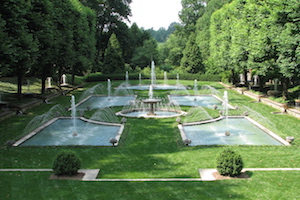
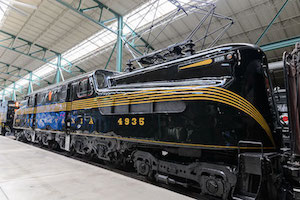
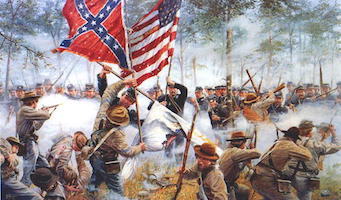
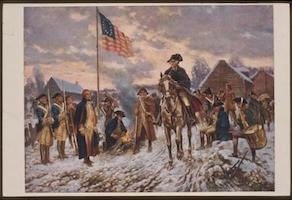
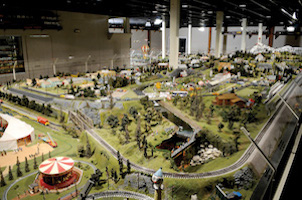

- Longwood Gardens are 17 miles from our hotel. On July 20, 1906, Pierre S. du Pont, American entrepreneur, businessman, philanthropist, and member of the prominent du Pont family purchased a farm primarily to preserve the trees. He wasn’t planning to create Longwood Gardens, but within a few years, his desire to make it a place where he could entertain his friends transformed a simple country farm into one of the country’s leading horticultural display gardens. Today the 1,077- acre Longwood Gardens consists of varied outdoor gardens, ranging from formal to naturalistic in their landscape design, and 20 indoor gardens within a 4.5 acre group of heated greenhouses. Longwood’s Conservatory contains 4,600 different types of plants and trees, as well as fountains If you go, you should plan on spending at least a half day there. There are two restaurants at Longwood Gardens.
- Trains, Trains, Trains! If you are a railroad buff, Strasburg, PA, 30 miles west of our hotel is a must! There are several outstanding railroad attractions all within a two mile radius. Recommended in this order are: The Railroad Museum of Pennsylvania with over 100 historic locomotives and rolling stock, The Choo Choo Barn a 1,700 sq ft model train layout which has grown steadily since 1961, The National Toy Train Museum which contains one of the most extensive toy train collections in the world. The Museum exhibits trains from the mid-1800s through the present day. Finally there is The Strasburg Railroad a 45 minute round trip steam train ride through tranquil Amish country on America’s oldest operating railroad with a charter dating back to June 9, 1832. While not an atraction, there's even a 38 room motel and restaurant where each room is an actual railroad caboose! The Red Caboose Motel and Restaurant
- Gettysburg Battlefield About 1 1/2 hours west of our hotel is the site of the bloodiest battle ever fought on US soil, Gettysburg battlefield. The Battle of Gettysburg was fought July 1–3, 1863. The famous Pickett's Charge on the third day of the battle marked the "high water mark" for the south but his defeat marked the turning point in the Civil War. There is so much to see there but don't miss the Cyclorama Painting a 360 degree, 377feet in circumference painting done in the late 1880's of the battle, or the two hour personal tour by a licensed battlefield guide. These guides must pass a comprehensive exam covering the entire battle in depth before being licensed by the National Park Service. You can also stand on the spot where Lincoln delivered his Gettysburg Address.
- Historic Valley Forge is located just 15 miles east of our hotel. In September 1777, British forces had captured the American capital of Philadelphia. After failing to retake the city, Washington led his 12,000-person army into winter quarters at Valley Forge, located approximately 18 miles northwest of Philadelphia. They remained there for six months, from December 19, 1777 to June 19, 1778. At Valley Forge, the Continentals struggled to manage a disastrous supply crisis while retraining and reorganizing their units. About 1,700 to 2,000 soldiers died due to disease, possibly exacerbated by malnutrition. Valley Forge has 9 major tour stops that follow the 10-mile Encampment Tour Route. This self-guided driving tour can take anywhere from 20 minutes to upwards of 2 hours depending on how often you stop. The tour takes you to many historic monuments and sites including the small house that served as Washington's headquarters.
- Eastern State Prison was operational from 1829 until 1971. The penitentiary refined the revolutionary system of separate incarceration first pioneered at the Walnut Street Jail which emphasized principles of reform rather than punishment. Notorious criminals such as Al Capone and bank robber Willie Sutton were held inside its innovative wagon wheel design. At its completion, the building was the largest and most expensive public structure ever erected in the United States, and quickly became a model for more than 300 prisons worldwide. The prison is currently a U.S. National Historic Landmark, which is open to the public as a museum for tours seven days a week, twelve months a year, 10 am to 5 pm.
- Where do all the hippies meet - South Street, South Street. You remember that song from the 60's. Well this is it, still, "...the hippest street in town." With over 400 shops and restaurants the South Street Headhouse District is one of Philadelphia’s most eclectic and lively neighborhoods, with a personality & charm all its own. Unique & diverse shops, tantalizing tastes and fabulous people watching keep visitors & locals coming back for more. Larry Fine (of Moe, Larry and Curly fame) was born in the house at the corner of 3rd and South Street.
- The Museum of The American Revolution was opened to the public on April 19, 2017, the anniversary of the first battle of the war, Lexington and Concord, on April 19, 1775.. Visitors follow a chronological journey from the roots of conflict in the 1760s to the rise of armed resistance, the Declaration of independence of 1776 through the final years of the war. A dedicated theater houses one of the most iconic surviving artifacts of the Revolution: General Washington's Headquarters Tent, which served as both his office and sleeping quarters throughout much of the war.
- The Hagley Museum is 25 miles south of our hotel in Wilmington, DE. Located on 235 acres along the banks of the Brandywine Creek, Hagley is the site of the gunpowder works founded by E.I. du Pont. In 1802, French immigrant Eleuthère Irénée du Pont founded black powder mills on the banks of Brandywine Creek. He chose the location for the river's tumble over the Fall Line which provided power, timber and willow trees (used to produce quality charcoal required for superior black powder), the proximity to the Delaware River (on which other ingredients of the powder – sulfur and saltpeter – could be shipped); and the quarries of gneiss which would provide building materials for the mills. The E. I. du Pont de Nemours & Company's black powder factory became the largest in the world.
Registration Form
Return to Reunions Page
Return to Events Schedule




 Commanding Officers
Commanding Officers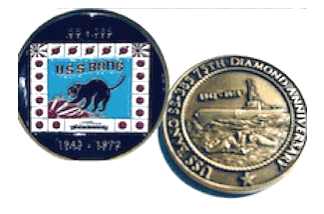 Small Stores
Small Stores